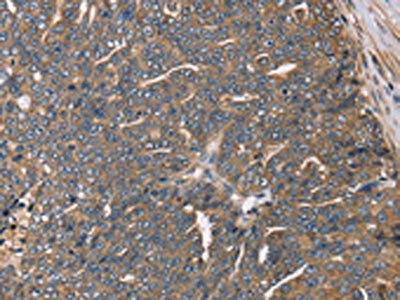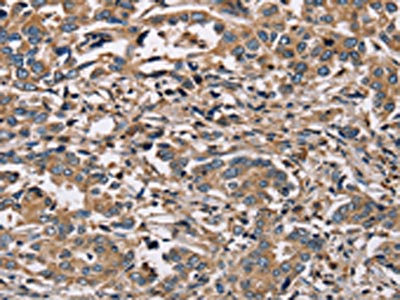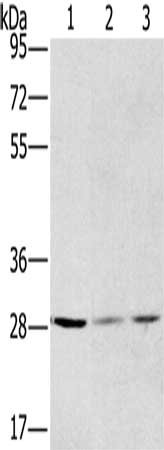
The image on the left is immunohistochemistry of paraffin-embedded Human cervical cancer tissue using CSB-PA950658(HSD17B12 Antibody) at dilution 1/30, on the right is treated with fusion protein. (Original magnification: x200)
HSD17B12 Antibody
CSB-PA950658
ApplicationsWestern Blot, ELISA, ImmunoHistoChemistry
Product group Antibodies
ReactivityHuman, Mouse, Rat
TargetHSD17B12
Overview
- SupplierCusabio
- Product NameHSD17B12 Antibody
- Delivery Days Customer20
- ApplicationsWestern Blot, ELISA, ImmunoHistoChemistry
- CertificationResearch Use Only
- ClonalityPolyclonal
- ConjugateUnconjugated
- Gene ID51144
- Target nameHSD17B12
- Target descriptionhydroxysteroid 17-beta dehydrogenase 12
- Target synonyms17-beta-HSD 12; 17beta-HSD type 12; 17-beta-hydroxysteroid dehydrogenase 12; 3-ketoacyl-CoA reductase; estradiol 17-beta-dehydrogenase 12; KAR; SDR12C1; short chain dehydrogenase/reductase family 12C member 1; steroid dehydrogenase homolog; very-long-chain 3-oxoacyl-CoA reductase
- HostRabbit
- IsotypeIgG
- Protein IDQ53GQ0
- Protein NameVery-long-chain 3-oxoacyl-CoA reductase
- Scientific DescriptionThis gene encodes a very important 17beta-hydroxysteroid dehydrogenase (17beta-HSD) that converts estrone into estradiol in ovarian tissue. This enzyme is also involved in fatty acid elongation. Catalyzes the transformation of estrone (E1) into estradiol (E2), suggesting a central role in estrogen formation. Its strong expression in ovary and mammary gland suggest that it may constitute the major enzyme responsible for the conversion of E1 to E2 in women.
- ReactivityHuman, Mouse, Rat
- Storage Instruction-20°C or -80°C
- UNSPSC12352203


